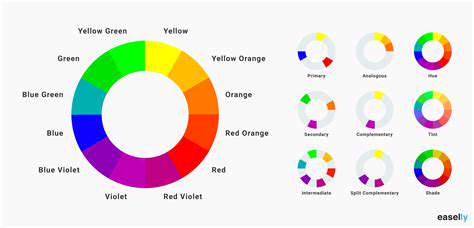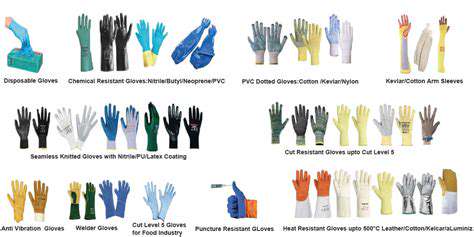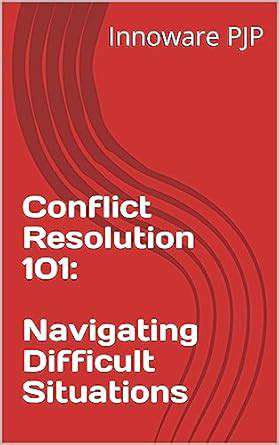How to Write a LinkedIn Profile That Attracts Recruiters

Highlight Your Skills and Expertise with Precision
Crafting a Compelling Headline
Your LinkedIn headline is your first impression. It's crucial to craft a compelling headline that accurately reflects your skills and expertise, and entices recruiters and potential connections to learn more. Instead of simply listing your job title, use keywords that highlight your specific value proposition. For example, instead of Software Engineer, try Results-oriented Software Engineer specializing in cloud-based solutions and agile methodologies. This concisely communicates your skills and the impact you bring to the table, making you stand out in a sea of profiles.
Showcasing Your Professional Experience
This section is vital for demonstrating your career progression and accomplishments. Use the Experience section to provide a detailed account of your responsibilities and achievements in each role. Quantify your achievements whenever possible. Instead of saying Managed social media campaigns, say Managed social media campaigns, resulting in a 25% increase in engagement and a 15% boost in website traffic within six months. This quantifiable data adds weight to your claims and showcases your impact.
Highlighting Your Skills and Expertise
This is where you explicitly showcase your key skills. Use a variety of relevant keywords, including technical skills, soft skills, and industry-specific expertise. Think about the skills recruiters and potential employers are looking for and incorporate them into your profile. Use action verbs to describe your abilities, showcasing your proficiency and impact. For example, Developed and implemented innovative strategies is more effective than simply Developed strategies.
Emphasizing Your Education and Certifications
Education and certifications demonstrate your commitment to professional development and expertise. Include relevant degrees, certifications, and any other qualifications that support your professional goals. If you have completed advanced courses or workshops, mention them as well. This section provides further evidence of your skills and knowledge.
Demonstrating Your Projects and Portfolio
If applicable, showcase your projects, portfolio pieces, or personal websites. This allows you to demonstrate your practical skills and showcase the tangible results you've achieved. Include links to your projects or portfolios to direct potential employers and connections to your work. A strong portfolio often makes a significant difference in attracting the right opportunities.
Adding a Compelling Summary
The Summary section is an excellent opportunity to provide a brief overview of your professional background, aspirations, and unique value proposition. Highlight your key skills and experiences in a concise and compelling manner. Think of it as a personal elevator pitch that showcases your unique blend of expertise and professional goals. This section is a critical opportunity to make a lasting impression.
Optimizing Your Profile for Search
Use relevant keywords throughout your profile to improve your visibility in LinkedIn search results. Incorporate keywords in your headline, experience descriptions, skills section, and summary. This strategic use of keywords will increase your chances of being discovered by recruiters and potential connections looking for professionals with your specific skills and expertise. Remember to also use appropriate keywords related to your desired industry or role.
Craft a Compelling Headline and Summary
Crafting a Compelling Headline
Your LinkedIn headline is your first impression. It's crucial for attracting the right attention. It's not just a title, but a concise summary of your professional brand. A strong headline should clearly communicate your skills, experience, and aspirations within the context of your target audience. Think about the keywords people might use to search for professionals like you and incorporate them naturally into your headline.
A compelling headline grabs attention and effectively communicates your value proposition. It should highlight your unique selling points and entice readers to learn more. Avoid generic or overly broad descriptions. Instead, focus on what makes you stand out from the crowd and what you can offer potential employers or collaborators.
Writing a Concise and Engaging Summary
The summary section is your elevator pitch. It's your chance to showcase your professional journey and highlight key achievements. This section should be brief but impactful, ideally under 200 words, and it should paint a clear picture of your professional persona and goals. Remember to use action verbs and quantifiable results to demonstrate your accomplishments and impact.
Your summary should showcase your unique value proposition. What problems can you solve? What unique skills do you possess? What are your career aspirations? This is your opportunity to connect with potential employers and collaborators on a personal level while showcasing your professional value.
Highlighting Key Skills and Expertise
Demonstrate your proficiency in specific skills relevant to your industry. Use keywords that recruiters and potential employers frequently search for. Quantify your skills whenever possible. Instead of saying Proficient in Microsoft Office, say Proficient in Microsoft Office Suite, with 5+ years of experience using Excel for data analysis, resulting in X% improvement in efficiency.
Be specific in detailing your skills and expertise, and consider using industry-recognized certifications or training courses to further bolster your credentials. This section helps potential employers quickly assess your abilities and determine if you possess the necessary skills for the roles they are seeking to fill. Use a keyword-rich approach to maximize visibility in search results.
Showcasing Relevant Experience and Achievements
This section is where you showcase your work history, emphasizing achievements and quantifiable results. Use the STAR method (Situation, Task, Action, Result) to structure your descriptions, illustrating how your actions contributed to positive outcomes. Quantify your accomplishments whenever possible (e.g., Increased sales by 15%).
Use strong action verbs to describe your responsibilities and accomplishments. Highlight your contributions to previous roles and demonstrate your ability to achieve results. This section should clearly demonstrate your value and impact in previous positions.
Including Relevant Projects and Portfolios
If applicable, include links to your online portfolio, personal website, or GitHub repositories. This allows potential employers to explore your work beyond the confines of your LinkedIn profile. This section is crucial for showcasing your practical skills and experience in a tangible way.
Highlighting projects and portfolios allows you to showcase practical application of your skills. If you're a designer, showcasing your portfolio demonstrates your design capabilities. If you're a developer, providing links to your code repositories showcases your coding proficiency.
Optimizing for LinkedIn Search and Visibility
Use relevant keywords throughout your profile to improve searchability. Research the keywords used by recruiters and potential employers. This will increase your visibility in LinkedIn searches and make you more accessible to those seeking professionals with your skill set.
Optimize your profile for LinkedIn's search algorithms. Use relevant keywords and phrases to make your profile discoverable to recruiters and potential employers. This section is about optimizing your profile for search engines and expanding your reach on LinkedIn.


![How to Use AI Tools for Studying Effectively [Ethics]](/static/images/31/2025-05/MitigatingPotentialEthicalConcernsAssociatedwithAIStudyTools.jpg)





![Guide to Learning About [Specific Historical Period]](/static/images/31/2025-06/TheGrowthofCitiesandUrbanization.jpg)



